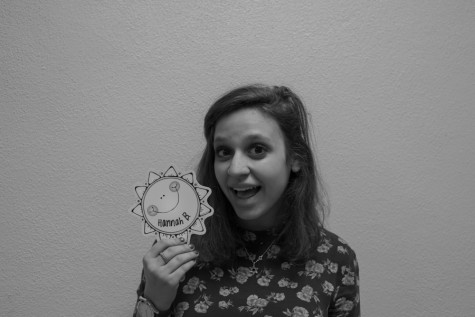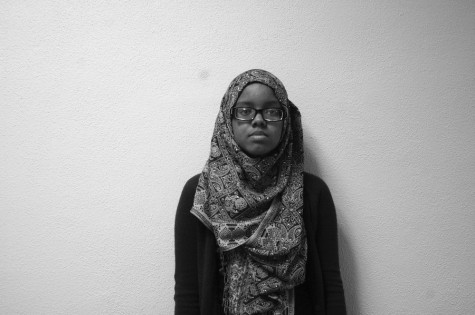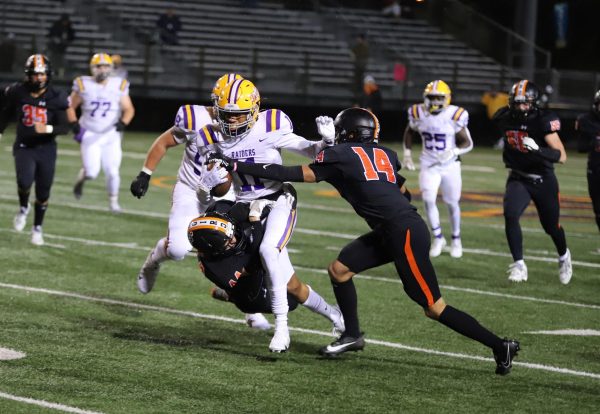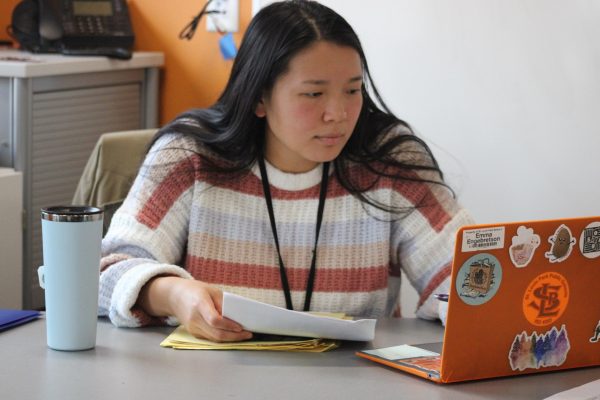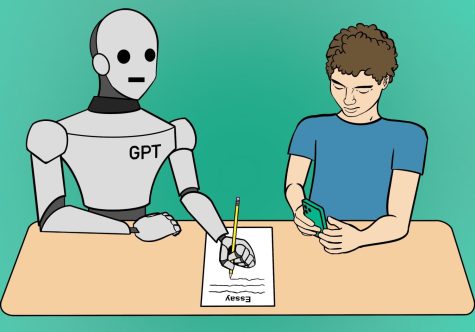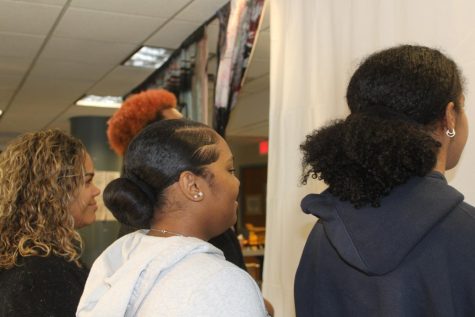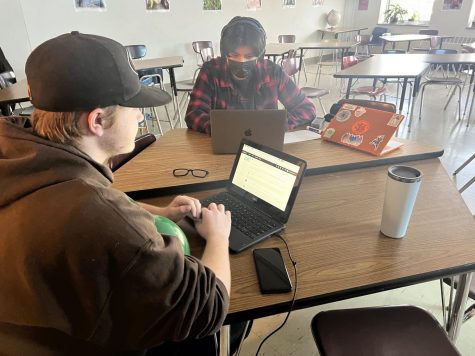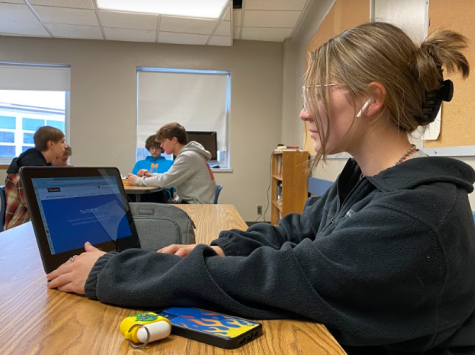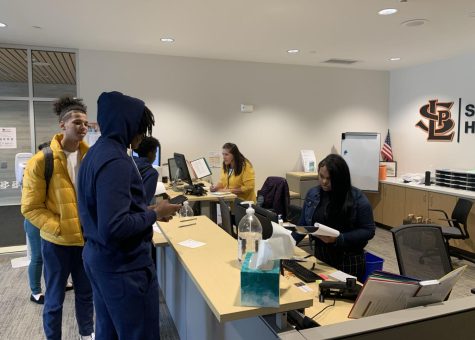Islamophobia Unveiled
Discrimination of Muslims shows effects both locally and nationwide
March 19, 2015
Brandy Siddiqui, the adviser of the African Middle-Eastern student group, remembers losing friends when she first converted to Islam. Only years later did they speak to her again.
This situation is not unique. In 2014, 73 percent of Americans had an unfavorable attitude toward Muslims, according to the Arab American Institute.
According to a report published in 2013 by the Southern Poverty Law Center, anti-Islamic hate crimes increased by 50 percent in 2010.
Yasmine Taeb, the Islamophobia project manager at the Center for American Progress, said Islamophobia is not only prejudice against Muslims, but also includes the vast network of organizations and individuals that fuel hatred and discrimination.
“There’s a network of organizations, funders, activists and pundits who are essentially spreading misinformation (and) irrational hatred of Muslims and Islam in the United States,” Taeb said.
Junior Chanice Davis said she sees this discrimination in society.
“I think people are hypocrites. They like to hate on other religions and races, but when it happens to them they feel like they’ve been wronged,” Davis said.
Prejudice motivates phobia
Senior Amran Nur said she feels people often stereotype her, because they have heard descriptions in the media of what Muslims are supposed to look like.
“I feel like when people first meet me, they know what the media’s told them so they automatically have this picture of who I am,” Nur said. “The media outlet shows these radical people and somehow you’re grouped with them. You’re paint-brushed as one of them.”
One of the problems with Islamophobia is the general public often doesn’t treat it as legitimate discrimination, according to Taeb. This can be advantage to an Islamophobic organization, she said, because people don’t see it as a problem and are less likely to combat its effects.
“(Islamophobia) is just as heinous and condemnable as any other discrimination against any community and it should be treated as such,” Taeb said. “The problem right now is that we don’t treat it the same.”
Senior Ladan Abdi said the media’s constant portrayal of Islam as a terrorist religion makes people believe that all Muslims must be involved in terrorism.
“I feel like people, when they see the hijab, just assume that ‘oh, you’re a terrorist,’” Ladan Abdi said. “The media is the whole reason why people think Muslims are terrorists, and obviously if you keep hearing that, you’re going to think that all Muslims are terrorists.”
Ladan Abdi also said the Islamic terrorism shown by the media causes the fear of Muslims in the United States.
“Terrorism has been given a name, a religion, a group of people, and an exact look,” Ladan Abdi said. “(The media) labeled what terrorism is.”
Taeb said the media’s impact on youth can be strong, and education is the only way to counteract its effects.
“People start forming their opinions (at a young age) about various issues. If you’re constantly in the media seeing people spouting hate, that’s eventually going to have a huge impact on you,” Taeb said.
Junior Alexis Baker said she believes non-Muslims stereotype other Muslims because they associate them with the terrorists.
“I think people just generalize and just assume that just because some of the terrorists are Muslims, other people must be too,” Baker said.
Cawo Abdi, an assistant professor of sociology at the University of Minnesota, said anti-Islamic beliefs come from the idea that their loyalties are somehow different than non-Muslim Americans.
“The majority of Muslims are citizens of this country. They are taxpayers. They are working,” Cawo Abdi said. “The idea that these people have different loyalties that threaten our security is illogical.”
Another cause of Islamophobia, Cawo Abdi said, is the lack of interaction between Muslims and non-Muslim Americans.
“Many Americans have never encountered a Muslim, so the Muslim turns into someone who is different than us,” Cawo Abdi said. “The whole construction in the media makes the Muslim someone who doesn’t look like us, who doesn’t think like us, and that creates fear.”
Siddiqui said religion is often practiced differently based on the culture of the individual and this difference can cause problems.
“What people don’t understand is that just like the way an Irish Catholic practices Catholicism is going to be very different from how a Mexican Catholic practices Catholicism. (Muslims) are very different in the way that they practice,” Siddiqui said.
Bias manifests in the West
According to the Federal Bureau of Investigation (FBI), in 2012 almost 1,400 people reported experiencing a religiously motivated hate crime, 18.7 percent of the total number of hate crimes. These offenses included murder, rape, aggravated assault, intimidation, arson, vandalism and theft.
The FBI states on their website, however, it does acknowledge a large number of hate crimes go unreported.
Corey Saylor, director of the Department to Monitor and Combat Islamophobia at the Council on American-Islamic Relations said another manifestation of Islamophobia is the anti-Islamic legislation banning “foreign law,” a thin disguise to prevent the implementation of Sharia laws — Islam’s religious code. Sharia laws regulate day-to-day life in countries such as Saudi Arabia.
He said these anti-Sharia laws violate the Constitution because of the First Amendment right to practice any religion freely.
“Not only are (legislators) contributing to Islamophobia, but they are also contributing to the erosion of the Constitution,” Saylor said. “The First Amendment clearly says you don’t treat one faith differently than another. The intention of these bills, whether they say it or not, is to vilify Islam.”
Cawo Abdi said other stereotypes surrounding Muslim women focus on their relationships with their husbands or fathers and the way they choose to dress.
“Many Muslim women experience the stereotype that they are all oppressed — that they are all subject to male domination,” Cawo Abdi said. “It’s very possible that some of these women might be pressured by their parents or families to dress certain ways, but we are all pressured by our society and our communities.”
Cawo Abdi also said when Muslim women are not seen as anything but what they wear, barriers are formed between people, preventing connections and conversations.
“We tend to reduce (Muslim women) to the veil, and it creates the otherness. It creates distance instead of getting to know each other,” Cawo Abdi said.
Siddiqui said people generalize her with their own image of what they think Muslim women should look like and are often wrong.
“Someone told me I wasn’t very religious because I don’t cover my hair,” Siddiqui said. “Well, no, you don’t get to tell me if I’m religious or not. I just have a different interpretation of it.”
Steps to halt intolerance
Saylor said preventing the spread of Islamophobia today will protect our country in the future by making it unacceptable to discriminate based on religion, race or any other demographic.
“The second you allow (Islamophobia), that tells you that yes, today it may be Muslims, but give it 20 years, and it’ll be somebody else,” Saylor said. “If we don’t protect a hated minority today, it makes it easier to pass laws that target more groups in the future.”
According to Siddiqui, this can be done by people being more accepting of religions and practices different from their own, without generalizing other people’s experiences.
“Everyone’s going to do their own thing, (and) do you get to question somebody’s faith because they don’t do things the way you think they’re doing them?” Siddiqui said.
Students can combat Islamophobia by standing up for their Muslim classmates when anti-Islamic attitudes surface in their communities, Taeb said.
“If you see classmates, if you see teachers, if you see anyone in your school that is spreading fear mongering or hate against Muslims, then your responsibility would be to push back,” Taeb said.
Taeb also said another step students can take to prevent Islamophobia is to educate themselves and their peers.
“If you start educating yourself about the issue, that’s a very powerful statement to these (Islamophobic) groups that think they can just spread their misinformation anywhere and be successful,” Taeb said.
Nadia Mohamed said she no longer cares about fitting in because she is starting to accept herself for who she really is.
“People are staring because I am wearing a hijab, and it makes you feel like you’re standing out. It’s always been believed that you have to fit in,” Nadia Mohamed said. “Now I am realizing it’s not a bad thing to stand out. It’s who you are.”



